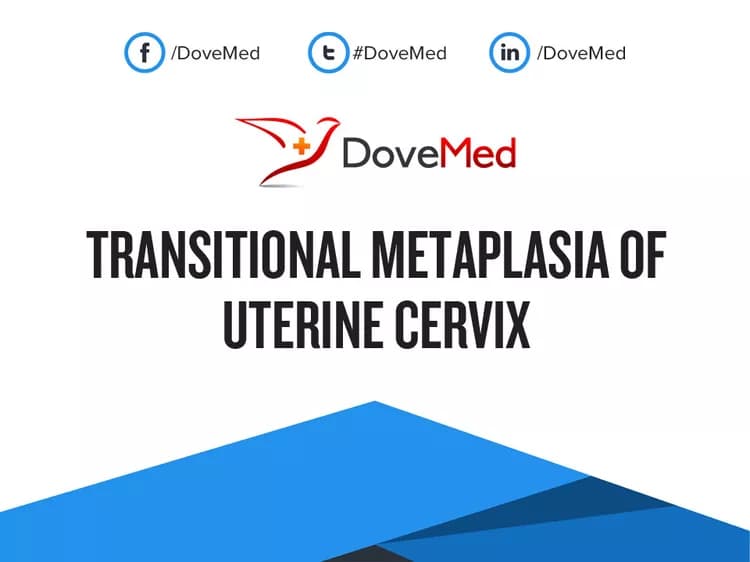What are the other Names for this Condition? (Also known as/Synonyms)
- Cervical Transitional Cell Metaplasia
- Transitional (Urothelial) Cell Metaplasia of Uterine Cervix
- Urothelial Metaplasia of Cervix
What is Transitional Metaplasia of Uterine Cervix? (Definition/Background Information)
- Transitional Metaplasia of Uterine Cervix is an uncommon benign condition, wherein there is formation of transitional epithelium (similar to transitional cell epithelium of urinary bladder) in the transformation zone of the cervix
- The transformation zone of the cervix is an area of the cervix where the squamous epithelium meets the glandular epithelium
- In many cases, Transitional Cell Metaplasia of Uterine Cervix is an incidental finding, when the individual is being examined for other medical conditions
- There are no causative factors associated with Transitional Metaplasia of Uterine Cervix. But, the condition is believed to be associated with menopause
- There are no significant signs and symptoms or complications associated with Transitional Metaplasia of Cervix
- A benign Cervical Transitional Cell Metaplasia on a Pap smear may be misdiagnosed as high-grade squamous dysplasia. This can easily occur because some of the cellular features of Transitional Metaplasia of Cervix on a Pap smear may overlap with the features of squamous cells of high-grade squamous dysplasia
- The prognosis of Transitional Metaplasia of Uterine Cervix with suitable treatment is typically excellent
Who gets Transitional Metaplasia of Uterine Cervix? (Age and Sex Distribution)
- Transitional Metaplasia of Uterine Cervix is an uncommon condition affecting women around or following their menopause (age 40 years or beyond)
- No racial or ethnic group predilection is observed
What are the Risk Factors for Transitional Metaplasia of Uterine Cervix? (Predisposing Factors)
- Currently, no specific risk factors have been identified for Transitional Metaplasia of Uterine Cervix
- However, the condition is mostly observed in women during or after menopause (peri-menopausal or post-menopausal status)
It is important to note that having a risk factor does not mean that one will get the condition. A risk factor increases one's chances of getting a condition compared to an individual without the risk factors. Some risk factors are more important than others.
Also, not having a risk factor does not mean that an individual will not get the condition. It is always important to discuss the effect of risk factors with your healthcare provider.
What are the Causes of Transitional Metaplasia of Uterine Cervix? (Etiology)
- The exact cause of Transitional Metaplasia of Uterine Cervix is currently unknown
- The condition is not known to be associated with human papilloma virus (HPV) infection
What are the Signs and Symptoms of Transitional Metaplasia of Uterine Cervix?
- No significant signs and symptoms are associated with Transitional Metaplasia of Uterine Cervix
- The condition may be present in the vagina, cervix, and uterus of women
How is Transitional Metaplasia of Uterine Cervix Diagnosed?
A diagnosis of Transitional Metaplasia of Uterine Cervix may involve the following tests and procedures:
- A detailed medical history evaluation followed by a physical and pelvic exam is undertaken
- Pap smear: It may be ordered as a screening procedure. An abnormal test result warrants further testing
- Colposcopic exam and biopsy: The abnormal areas of the cervix are visualized with a colposcope. After numbing the cervix with a local anesthetic, an instrument, called a biopsy forceps, is used to get a tissue sample
Note: Cervical Transitional Metaplasia is known to present diagnostic challenges and a careful examination is necessary to identify the condition definitively. Frequently, it may be misdiagnosed as high-grade squamous intraepithelial lesion (HSIL) on a Pap smear; HSIL is a strong precursor of invasive carcinoma.
Many clinical conditions may have similar signs and symptoms. Your healthcare provider may perform additional tests to rule out other clinical conditions to arrive at a definitive diagnosis.
What are the possible Complications of Transitional Metaplasia of Uterine Cervix?
There are no complications associated with Transitional Metaplasia of Uterine Cervix.
How is Transitional Metaplasia of Uterine Cervix Treated?
No specific treatment is necessary for Transitional Metaplasia of Uterine Cervix, since the condition is not associated with any signs and symptoms.
How can Transitional Metaplasia of Uterine Cervix be Prevented?
Currently, there are no definitive methods available to prevent Transitional Metaplasia of Uterine Cervix.
What is the Prognosis of Transitional Metaplasia of Uterine Cervix? (Outcomes/Resolutions)
- Transitional Metaplasia of Uterine Cervix is an uncommon condition that has an excellent prognosis, since it is benign
- There is no risk for premalignancy or a malignant transformation. However, it is known to be often misdiagnosed as high-grade pre-cancer
Additional and Relevant Useful Information for Transitional Metaplasia of Uterine Cervix:
A vast majority of cancers arising from the cervix (almost 70 %) are squamous cell carcinomas. The second most common type is adenocarcinoma.
Related Articles
Test Your Knowledge
Asked by users
Related Centers
Related Specialties
Related Physicians
Related Procedures
Related Resources
Join DoveHubs
and connect with fellow professionals


0 Comments
Please log in to post a comment.